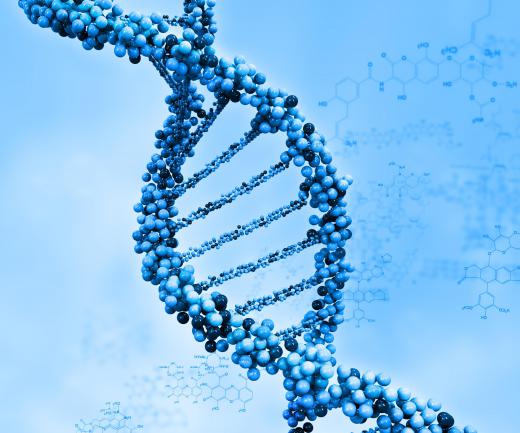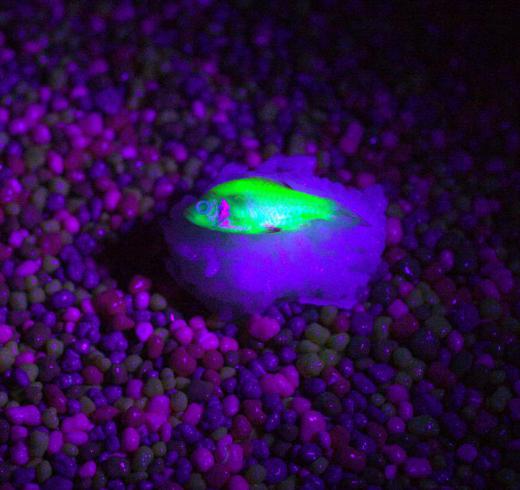What are Restriction Enzymes?
 Mary McMahon
Mary McMahon
Restriction enzymes are enzymes which recognize particular DNA sequences and cleave them, separating a strand of DNA in two wherever they find the sequences they have been coded to recognize. There are a number of applications for restriction enzymes, perhaps most notably in recombinant DNA technology which allows scientists to manipulate genetic information. Recombinant DNA is used for everything from developing therapeutic products like insulin for medical treatment to modifying crops.
These enzymes are isolated from bacteria. In bacteria, they protect the organism from foreign DNA by chopping up the DNA when it is recognized by the bacterium's body. Bacteria use a technique called restriction modification to protect themselves from their restriction enzymes, ensuring that the enzymes do not turn on the DNA of the bacterium itself. As a self defense mechanism, restriction enzymes are excellent, preventing the replication of foreign DNA in the body by fragmenting it.

Numerous restriction enzymes have been discovered, and more are constantly being uncovered in a process known as restriction enzyme mapping. Several labs produce restriction enzymes to sell to researchers and other labs. Each restriction enzyme has been coded to respond to a particular sequence of nucleotides, and the sequence is usually a palindrome, reading the same backward and forwards. When a restriction enzyme finds the sequence it recognizes, it cuts through both strands of the double helix structure of the DNA, separating it. It will also create multiple fragments if it identifies more than one copy of the sequence it knows.

Some restriction enzymes cut straight across the double helix, creating what are known as blunt ends. Others cut at different points on other sides, making a jagged cut referred to as “sticky ends.” In either case, an enzyme known as DNA ligase can be used to join a piece of DNA to the severed DNA, as long as the two portions have complementary ends. This technique can be used to insert new DNA into a genome, and to manipulate a genome, sort of like fitting together the pieces of two different puzzles.

In some cases, a restriction enzyme is coded for what is known as unambiguous recognition, which means that it recognizes only very specific sequences. Others are coded for ambiguous recognition, looking for sequences in which specific nucleotides bracket any nucleotides. Using known restriction enzymes, researchers can selectively snip up a sample of DNA into fragments known as restriction fragments.
AS FEATURED ON:
AS FEATURED ON:














Discussion Comments
The discovery of restriction enzymes is probably one of the most significant discoveries for genetic studies. If we didn't have restriction enzymes, scientists would have never been able to clone DNA, or even locate the different genes in our DNA which has thousands of them.
We would not have rDNA or recombinant DNA either because it is the outcome of different bonded DNA pieces, first cut by restriction enzymes and then put together in different ways.
Really, genetic engineering would not exist without restriction enzymes. They opened up so many new possibilities and advancement in this field.
@feruze-- Yes, scientists can definitely rebind DNA that has been cut. It's easy to attach pieces of DNA with sticky ends together, that's actually why it is called sticky ends. Blunt ends are a bit more difficult to rebind because the ends don't complement each other. But it is very much possible to bind DNA together regardless of whether it has a sticky end or blunt end.
I'm studying for a test on this subject. I haven't been able to find my notes on it for some reason, so this article is really helpful. I have several questions on a few points I'm confused about.
The article says that we can rebind the pieces of DNA regardless of whether it has sticky ends or blunt ends. In which situation would it be impossible to put the DNA back together after it has been cut by a restriction enzyme? Or is it always possible to rebind it?
I also read in my textbook that restriction enzymes can only cut the DNA at the restriction site. What's so special about the restriction site that it can only be cut there? And is it ever the case that there is no restriction site? What happens then?
Thank you!
Post your comments